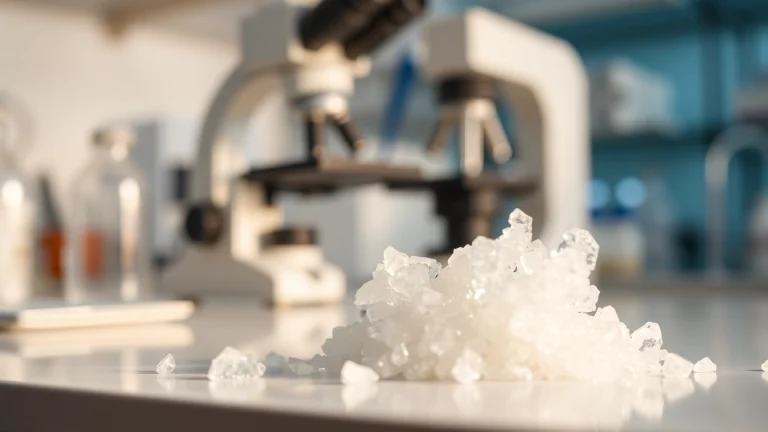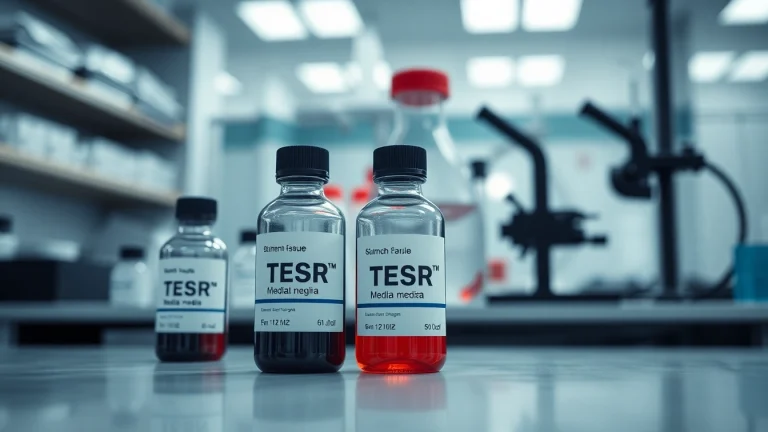
Understanding CarboxyMethyl Cellulose: Properties, Applications, and Benefits
Introduction to CarboxyMethyl Cellulose
CarboxyMethyl Cellulose (CMC) is a versatile cellulose derivative that has found extensive applications across multiple industries, including pharmaceuticals, food processing, and industrial manufacturing. It is produced through the reaction of cellulose, typically derived from wood pulp or cotton, with a derivative of acetic acid. This process results in the formation of carboxymethyl groups, which enhance the solubility and functionality of the cellulose. Not only is CMC known for its thickening and stabilizing properties, but it is also valued for its ability to improve the texture and appearance of various products. Given its wide-ranging applications, understanding the nature, manufacturing processes, and safety aspects of CarboxyMethyl Cellulose is essential for industries and consumers alike. For more about this compound, you can refer to CarboxyMethyl Cellulose.
What is CarboxyMethyl Cellulose?
CarboxyMethyl Cellulose is a water-soluble polysaccharide that serves various roles in both industrial applications and consumer products. With its unique chemical structure, which incorporates negatively charged carboxymethyl groups, CMC is classified as anionic, allowing it to modify the rheological properties of solutions. Its thickening ability makes it a critical component in many formulations, offering enhanced viscosity and stability to emulsions. Additionally, it acts as an effective binding agent and film-former, showcasing its versatility and significance across different sectors.
History and Development of CarboxyMethyl Cellulose
The development of CarboxyMethyl Cellulose dates back to the early 20th century when researchers sought to create a cellulose derivative that could provide enhanced solubility and functionality compared to traditional cellulose. As demand for synthetic thickeners and stabilizers grew, CMC quickly emerged as a vital component in various applications, ranging from food production to medical formulations. Over the years, extensive research and development efforts have allowed for the optimization of manufacturing processes, leading to greater efficiency and consistency in product quality.
Key Chemical Properties of CarboxyMethyl Cellulose
Some of the most important chemical properties of CarboxyMethyl Cellulose include:
- Solubility: CMC is highly soluble in water, which makes it suitable for use in aqueous solutions and food products.
- Viscosity Modification: It can significantly increase the viscosity of solutions, making it useful in thickening applications.
- Stabilizing Agent: CMC helps stabilize emulsions, preventing separation and enhancing product shelf life.
- Biocompatibility: It has low toxicity and is generally recognized as safe, making it ideal for use in pharmaceuticals and food products.
Manufacturing Process of CarboxyMethyl Cellulose
Raw Materials Required for CarboxyMethyl Cellulose Production
The primary raw materials required for the production of CarboxyMethyl Cellulose include:
- Cellulose Source: Typically, wood pulp or cotton is used as the raw cellulose material.
- Sodium Hydroxide (NaOH): Used to treat the cellulose and facilitate the reaction to form the carboxymethyl groups.
- Chloroacetic Acid (ClCH2COOH): This is the main reactant that introduces the carboxymethyl groups into the cellulose structure.
Steps Involved in Processing CarboxyMethyl Cellulose
The manufacturing process of CarboxyMethyl Cellulose typically involves the following steps:
- Preparation of Cellulose: The raw cellulose is purified and treated to remove impurities and enhance reactivity.
- Alkali Treatment: The purified cellulose is treated with sodium hydroxide to generate alkali cellulose.
- Esterification: Chloroacetic acid is introduced to the alkali cellulose, leading to the substitution reaction that forms carboxymethyl cellulose.
- Neutralization and Precipitation: Once the desired degree of substitution is achieved, the mixture is neutralized and precipitated.
- Washing and Drying: The product is washed to remove residual chemicals and then dried to obtain CMC powder.
- Grinding and Sifting: The dried product is ground to the required particle size and sifted for quality control.
Quality Control Measures in CarboxyMethyl Cellulose Production
Ensuring the quality of CarboxyMethyl Cellulose is pivotal for its performance in applications. The following quality control measures are commonly implemented:
- Consistency in Raw Materials: Regular testing of cellulose sources and reactants to ensure uniformity in quality.
- Process Monitoring: Continuous monitoring of reaction parameters, such as temperature and time, to maintain consistency in the esterification reaction.
- Final Product Testing: Assessing viscosity, solubility, and purity of the final product to meet industry standards.
Applications of CarboxyMethyl Cellulose
CarboxyMethyl Cellulose in Pharmaceuticals
In the pharmaceutical industry, CarboxyMethyl Cellulose is used for various purposes, including:
- Thickening Agents: CMC serves as a thickener in liquid formulations, enhancing the texture and stability of syrups and suspensions.
- Binder in Tablets: It is utilized as a binding agent in tablet formulations, aiding in the compression and structural integrity of tablets.
- Eye Drops: CMC is commonly found in eye drops due to its ability to retain moisture and provide relief from dry eyes.
Industrial Uses of CarboxyMethyl Cellulose
Outside of pharmaceuticals, CarboxyMethyl Cellulose is widely utilized in numerous industrial applications, which include:
- Textile Industry: CMC is applied as a sizing agent to enhance the finish and texture of textile products.
- Paints and Coatings: It acts as a thickening agent in paints, ensuring even distribution and improved application.
- Pulp and Paper: Used as a binding agent to enhance sheet formation and improve the quality of paper products.
Food Industry Applications of CarboxyMethyl Cellulose
The food industry leverages CarboxyMethyl Cellulose for its functional properties, which include:
- Stabilizer in Emulsions: CMC is often used in emulsified products like salad dressings and sauces to prevent separation.
- Thickening Agent: Commonly found in ice creams and dairy products, CMC improves texture and gives a creamy mouthfeel.
- Fat Replacer: It can mimic the texture of fats, making it beneficial in low-calorie food formulations.
Benefits and Safety of CarboxyMethyl Cellulose
Health Benefits of CarboxyMethyl Cellulose
Apart from its functional applications, CarboxyMethyl Cellulose is appreciated for various health benefits, notably:
- Dietary Fiber: CMC is considered a source of soluble dietary fiber, aiding in digestion and promoting a healthy gut.
- Low-Calorie Ingredient: Its use in low-calorie foods can assist individuals looking to manage weight while still enjoying flavorful options.
- Moisture Retention: In pharmaceuticals and cosmetics, CMC helps retain moisture, enhancing the hydrating effects of formulations.
Evaluation of Safety and Toxicity of CarboxyMethyl Cellulose
Numerous studies have evaluated the safety profile of CarboxyMethyl Cellulose, and findings generally suggest that it is safe for consumption:
- Regulatory Approvals: CMC is accepted by regulatory authorities worldwide, including the FDA, as safe for use in food and pharmaceuticals.
- Non-Toxic: Research indicates that it does not exhibit harmful effects at normal usage levels.
Regulatory Guidelines for CarboxyMethyl Cellulose Usage
The use of CarboxyMethyl Cellulose is regulated to ensure consumer safety. Each country may have specific guidelines, including:
- Permitted Levels: Regulatory agencies define acceptable limits for CMC in various products, ensuring consumer safety and product efficacy.
- Labeling Requirements: Manufacturers are often required to label products containing CMC properly, providing transparency to consumers.
Future Trends in CarboxyMethyl Cellulose Research
Innovations in CarboxyMethyl Cellulose Applications
Ongoing research is focused on exploring new and innovative applications for CarboxyMethyl Cellulose. Trends include:
- Biodegradable Films: Investigating the potential of CMC in developing eco-friendly packaging materials.
- Pharmaceutical Delivery Systems: Enhancing drug formulation and delivery systems utilizing CMC’s unique properties.
Environmental Impacts and Sustainability
As environmental concerns grow, there is a focus on ensuring that CarboxyMethyl Cellulose production methods are sustainable:
- Renewable Resources: Emphasizing the use of sustainably sourced cellulose to minimize ecological impact.
- Waste Reduction: Innovative approaches to minimize waste in the production process are being explored.
Research Areas Needing Exploration in CarboxyMethyl Cellulose
Future research directions include:
- Enhanced Functional Properties: Investigating how modifications to CMC can enhance its performance in various applications.
- Health Impacts: Continued study of potential health benefits and safety regarding long-term exposure to CMC in dietary applications.


